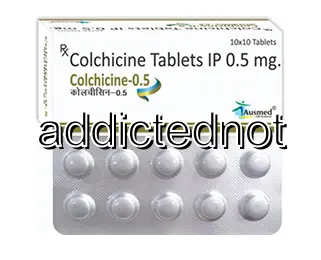Buy Autumn Crocus (Colchicum Autumnale) Online in the USA
| Package | Dosage | Price | Price per Dose | |
|---|---|---|---|---|
| Dosage: 0,5mg | ||||
| 270 pill | 0,5mg | $273.93 | $1.01 | |
| 360 pill | 0,5mg | $267.16 | $0.74 | |
| 180 pill | 0,5mg | $231.65 | $1.29 | |
| 120 pill | 0,5mg | $202.90 | $1.69 | |
| 90 pill | 0,5mg | $174.16 | $1.93 | |
| 60 pill | 0,5mg | $135.26 | $2.25 | |

Autumn Crocus Description
Overview of Autumn Crocus
Autumn Crocus, scientifically known as Colchicum autumnale, is a perennial flowering plant that blooms in late summer to fall. It is native to parts of Europe and is well known for its striking purple flowers and distinct foliage. In the realm of medicine, Autumn Crocus is recognized primarily for its extract, colchicine, which has been used for centuries in traditional and modern treatments. The plant’s delicate appearance masks its potent pharmacological properties, making it a fascinating subject for both herbalists and medical professionals.
Pharmacological Properties and Uses
Colchicine, derived from Autumn Crocus, is a potent alkaloid that affects cell division. It’s widely used to treat certain medical conditions such as gout, a form of inflammatory arthritis caused by uric acid crystals. By inhibiting the migration of white blood cells to inflamed areas, colchicine reduces swelling and pain associated with gout attacks. Additionally, it plays a role in preventing the formation of uric acid crystals, thereby managing and preventing future episodes.
Beyond gout, colchicine has been explored as a treatment option for other inflammatory diseases and some rare conditions. Its ability to interfere with microtubule formation makes it effective in controlling abnormal cell proliferation, which is why it has also been studied in cases of familial Mediterranean fever. Despite its effectiveness, colchicine’s potent activity warrants careful dosing and monitoring due to its potential toxicity and side effects.
Administration and Dosage
Medical use of colchicine sourced from Autumn Crocus is highly controlled. It is available in various pharmaceutical formulations, including tablets and injectable forms. The dosage depends on the specific condition being treated, the patient’s overall health, and their response to therapy. Generally, low doses are used to minimize side effects while achieving therapeutic benefits.
Because colchicine can be toxic at high doses, it requires precise administration. It is typically prescribed under medical supervision, with healthcare providers closely monitoring for adverse reactions. Patients are advised to adhere strictly to prescribed doses and report any unusual symptoms or side effects promptly.
Potential Side Effects and Precautions
While colchicine can be highly effective, it also carries the risk of side effects. Common adverse reactions include gastrointestinal symptoms such as nausea, vomiting, diarrhea, and abdominal pain. More severe effects can involve blood abnormalities like anemia or bone marrow suppression, as well as muscle weakness or nerve damage in rare cases.
Patients with pre-existing liver or kidney issues, or those who are pregnant or breastfeeding, should exercise caution and consult their healthcare provider before using Autumn Crocus-derived medications. It is also crucial to avoid self-medicating with raw plant material, as the toxicity of Autumn Crocus can lead to serious poisoning if not handled properly.
Safety and Handling
Autumn Crocus should always be prepared and administered under professional supervision. The raw plant contains potent compounds, and improper use can result in poisoning or overdose. Pharmaceutical preparations are standardized for consistency and safety, ensuring that patients receive the correct dosages. It is not recommended to use the plant or its extracts without proper medical guidance.
In case of suspected overdose or poisoning, immediate medical attention is required. Symptoms of toxicity include severe gastrointestinal disturbances, respiratory issues, and neurological symptoms like confusion or seizures. Proper storage and handling are essential to prevent accidental ingestion, especially in households with children.